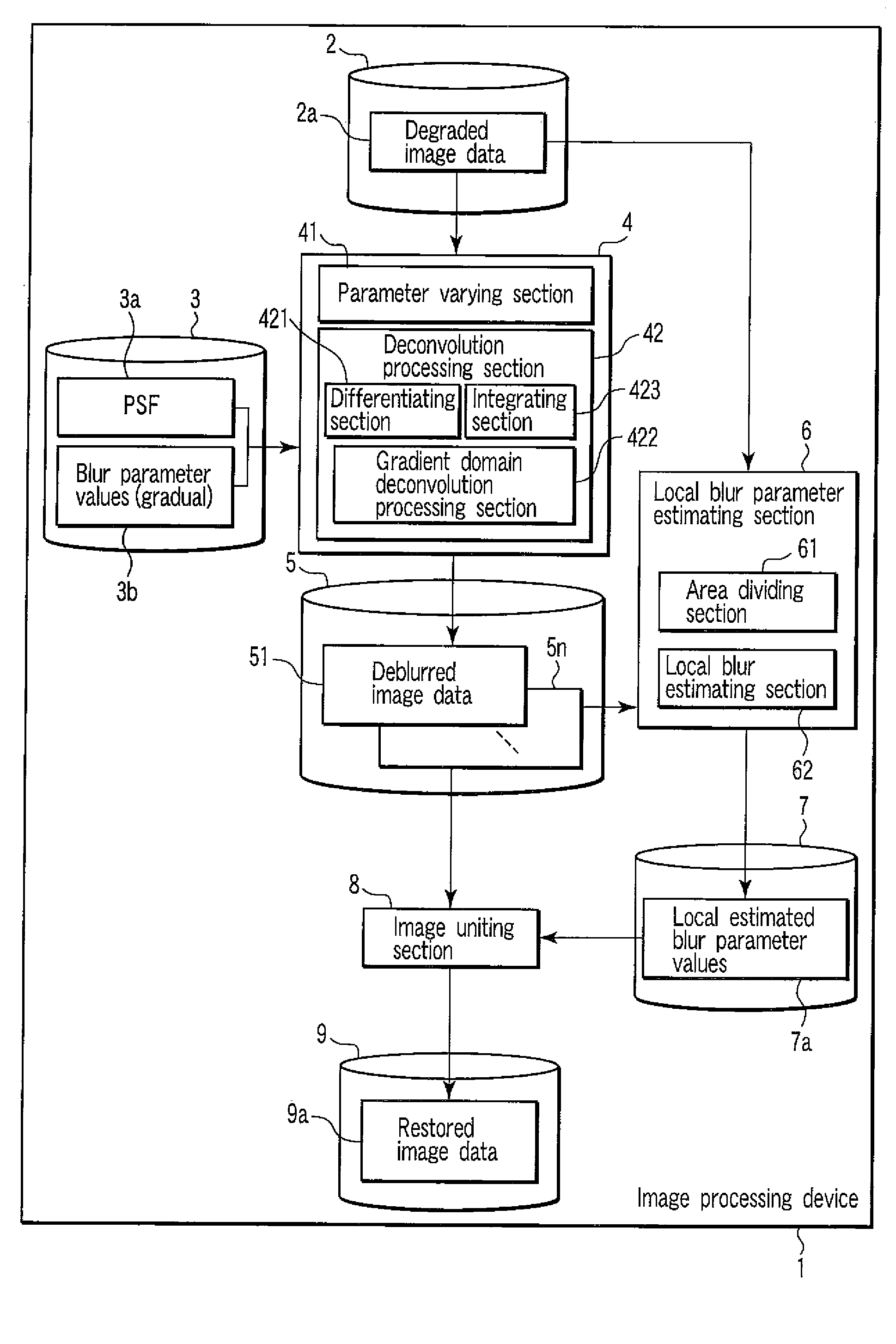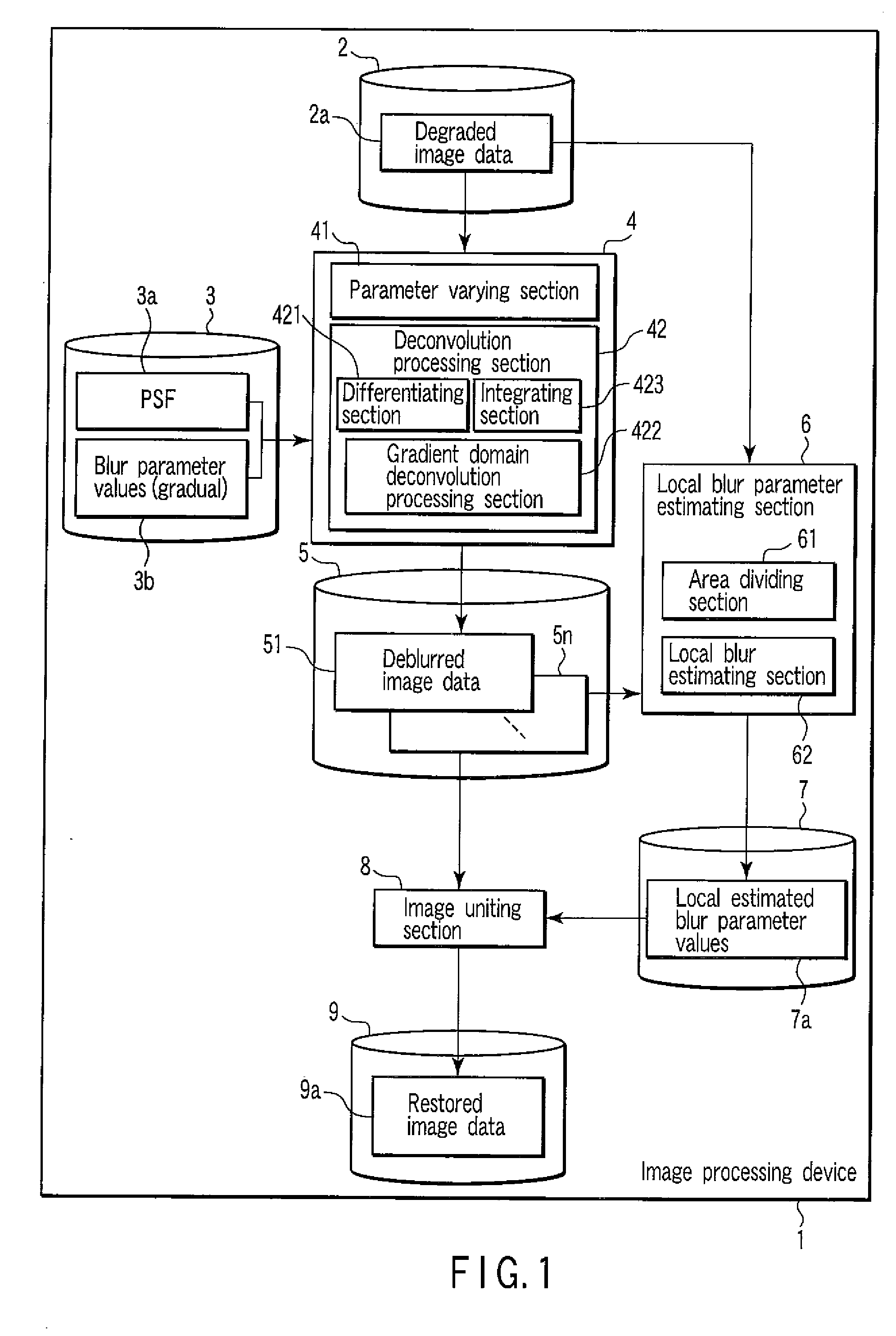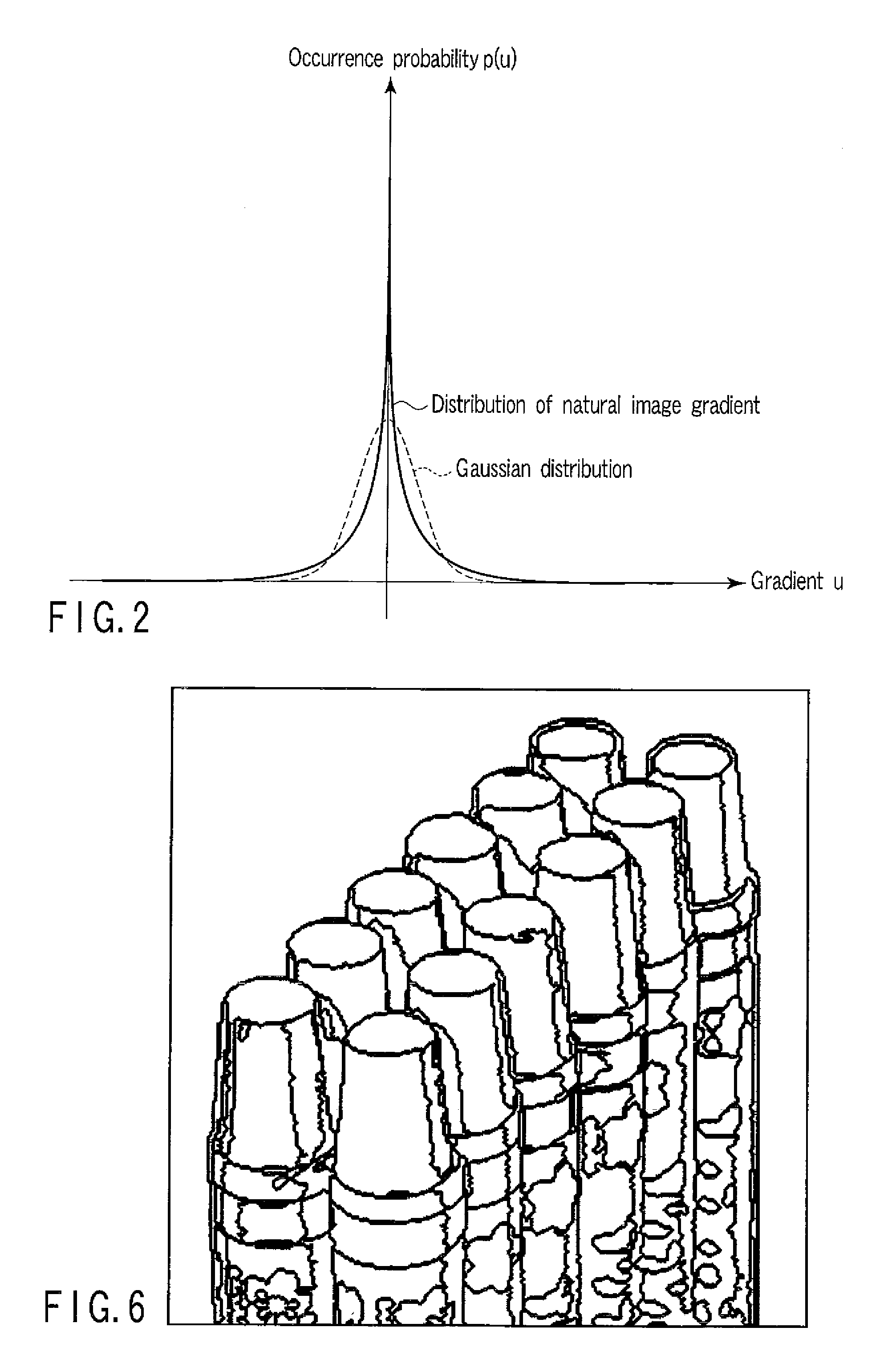Image Processing Device
a processing device and image technology, applied in the field of image processing devices, can solve the problems of difficult use of the techniques in documents 1 to 8, blind image deconvolution/restoration, and general ill-posed problems of deblurring
- Summary
- Abstract
- Description
- Claims
- Application Information
AI Technical Summary
Problems solved by technology
Method used
Image
Examples
first embodiment
[0036]An image processing device in accordance with the present embodiment deblurs image data.
[0037]The image processing device in accordance with the present embodiment performs different deblurring operations for the input image data, divides the image data into appropriate areas in accordance with an image content of the image data, performs a local blur estimation for each area, and unites the appropriately deblurred image data for each area. Thus, even if a state of a blur within single image data is not uniform, particularly, even if a variation of the blur state within the single image data is large, the image processing device can generate varied image data with a different blur state, at a high speed, while preventing possible noise amplification.
[0038]FIG. 1 is a block diagram showing an example of the image processing device in accordance with the present embodiment. In the present embodiment, input image data is degraded image data 2a and output image data is restored im...
second embodiment
[0147]In the present embodiment, description will be given of an example of application of the image processing device in accordance with the first embodiment.
Example of Application of the Image Processing Device
[0148]FIG. 12 is a block diagram showing a first example of application of the image processing device 1 in accordance with the present invention.
[0149]FIG. 12 shows an example in which image data taken with an imaging device 12 is converted.
[0150]A light (for example, sunlight or room light) emitted by a light source 13 impinges on a subject (for example, a person, an object, or a scenery) 14. Reflected light from the subject 14 is received by the imaging device 12 via a lens 15. The size and refractive index of the lens 15 are determined in accordance with the application. For example, CCD or a CMOS sensor is used as the imaging device 12.
[0151]The imaging device 12 outputs an electric signal corresponding to the quantity of received light to a digitizer 16. The digitizer ...
PUM
 Login to View More
Login to View More Abstract
Description
Claims
Application Information
 Login to View More
Login to View More - R&D
- Intellectual Property
- Life Sciences
- Materials
- Tech Scout
- Unparalleled Data Quality
- Higher Quality Content
- 60% Fewer Hallucinations
Browse by: Latest US Patents, China's latest patents, Technical Efficacy Thesaurus, Application Domain, Technology Topic, Popular Technical Reports.
© 2025 PatSnap. All rights reserved.Legal|Privacy policy|Modern Slavery Act Transparency Statement|Sitemap|About US| Contact US: help@patsnap.com



